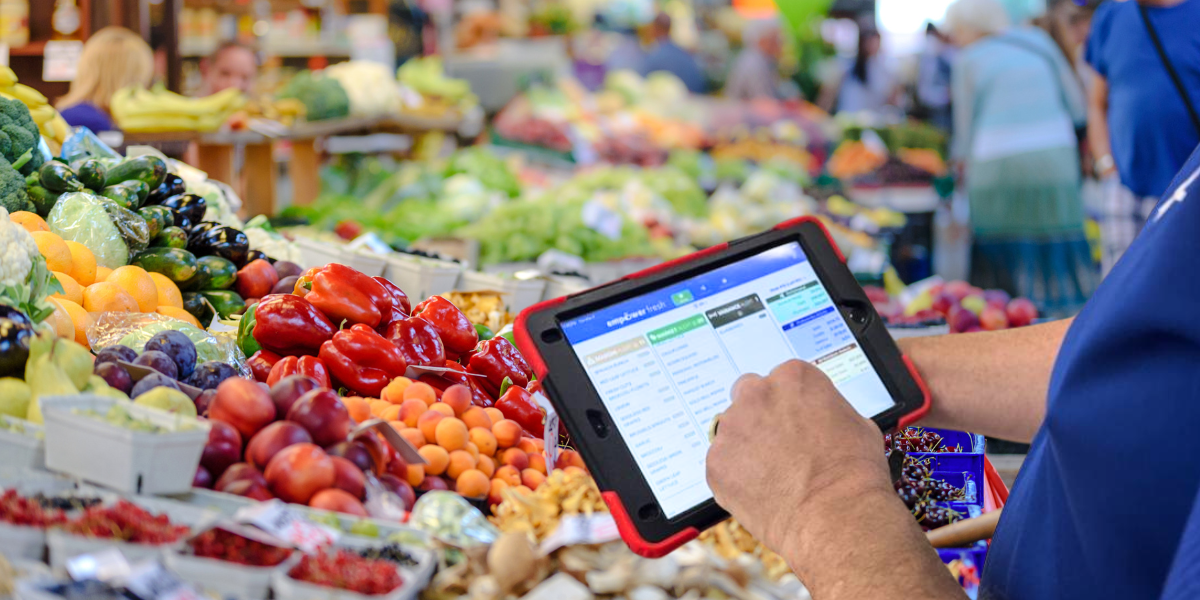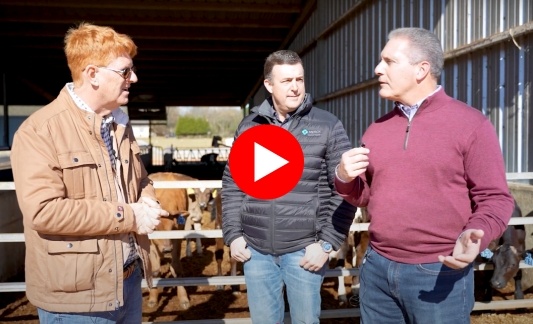Please do not participate in a Facebook scam about a $100 voucher. Facebook is working to have it removed.

4 min read
Transforming Grocery Retail: How AI Can Affordably Help Independents Thrive
Written by IGA News
Apr 16, 2025
Independent grocers face increasing pressure to improve operations, reduce shrink, and boost margins while keeping labor efficient and customers satisfied. As artificial intelligence (AI) becomes more accessible and affordable, it is rapidly reshaping how stores forecast, order, and manage inventory — especially in fresh departments like produce.
During a recent webinar, leaders of Red Oval Partner EmpowerFresh — the AI-powered produce management solution built by independent grocers for independent grocers — President & CEO Robert Austin and COO Jesse Himango, joined IGA VP Michael LaKier to examine how AI is being used today and where it’s taking the grocery industry in the near future.
Watch the full webinar below or keep reading for a recap.
Optimize Ordering and Forecasting
Traditional systems rely heavily on historical sales data, which often fail to account for many real-world factors influencing perishables, like secondary displays or ad placements. Narrow AI solutions, offered by EmpowerFresh, are "meant to go to town on just your information — it's a form of regenerative AI that is extremely effective at forecasting and identifying trends, seasonality, and price points," Austin explained. This technology also identifies invisible contributors to lift, such as when a product was likely featured on a secondary display — even if that detail wasn’t captured in the POS system.
This allows produce managers to input simple variables like "displaying strawberries" into the tool and receive a highly accurate forecast that accounts for the expected sales lift. As a result, AI enables smarter ordering — eliminating excess inventory, reducing shrink, and ensuring high in-stock conditions without over-ordering.
Balance Sales and Shrink
One of the unique strengths of AI forecasting tools is how they help grocers balance two often opposing goals: sales growth and shrink reduction. For example, a produce manager with strong sales but high shrink — likely due to over-ordering — can benefit from AI’s more accurate, display-informed ordering that reduces excess product and spoilage. Conversely, stores that run too lean, keeping shrink low at the expense of sales and in-stock positions, can see their revenue grow by trusting AI to suggest modest increases in order quantities where appropriate.
EmpowerFresh’s AI doesn’t just reduce shrink — it optimizes it in relation to sales, helping stores manage inventory with precision. Himango noted that while many retailers are often skeptical of vendor ROI claims, current customers have experienced returns between 6:1 and 14:1, driven by improvements in both shrink and sales performance.
Reduce Labor and Human Error
AI also delivers significant labor efficiencies. Produce managers traditionally spend 60-90 minutes per day placing orders, rotating inventory, and managing markdowns. With AI tools, the time required to place an order can drop to 30 minutes or less. The reduced need to manually track shrink, rotate aging inventory, and second-guess orders allows managers to focus more time on customer engagement, merchandising, and sales-driving activities.
Instead of replacing staff, these labor savings are better reinvested on the sales floor — where experienced team members can have the most impact. This is especially important given how much independent grocers rely on service, familiarity, and trust to differentiate from big-box competitors.
Local Sourcing and Flexible Inputs
A key part of many independents’ value proposition is local sourcing. Austin and Himango said the AI platform supports this local sourcing by integrating with various types of local suppliers — whether they're formal greenhouse growers sending digital invoices or seasonal farmers who still operate with paper receipts. In the latter cases, produce managers can manually enter invoices directly into the system to maintain inventory visibility and cost tracking.
This flexibility ensures that stores don’t have to sacrifice their commitment to local in order to benefit from advanced forecasting and inventory tools.
Real-World Results and ROI
Austin and Himango noted that EmpowerFresh has now deployed pilots successfully in a range of independent grocery operations across the U.S., with stores from Lowe’s Market in Texas to Queen's Price Chopper in Kansas seeing consistent improvements and customer satisfaction.
Through these pilots, they have found that largest financial gains tend to come from shrink reduction. Historically, markdowns, spoilage, and poor inventory turns contributed significantly to hidden losses. AI has helped expose and eliminate “paper shrink” and other inefficiencies by surfacing actionable data through business alerts — sent to store managers, category leads, or executives — depending on the user.
Moreover, these tools offer real-time financial visibility into margin, shrink, and billing performance, eliminating the need for grocers to make ad decisions or promotional strategies based on outdated or estimated figures.
AI Can Work with Independents' Data Systems
Many independent grocers worry that they don’t have the clean, structured data necessary for AI to work effectively. Himango addressed this concern directly, explaining that EmpowerFresh has built universal data tools capable of working with virtually any system—legacy, modern, front-end, or back-office. The company regularly ingests data from wholesalers, POS systems, vendor invoices, and retailer-specific platforms.
Where gaps exist, the company either fills them internally or partners with specialized tech firms to help bridge systems. This adaptability is key to working with independents, who often operate with unique setups. Even with older or fragmented systems, grocers can still tap into the benefits of AI-driven forecasting and shrink control.
The Future Store: Tech-Driven and Inventory-Aware
As technology continues to evolve, the store of the future will likely be driven by seamless integrations between smart sensors and AI systems. Austin predicts that soft inventory counting — still a part of many stores’ ordering processes — will soon be a thing of the past. Instead, drones, shelf cameras, and mobile robots will constantly scan and update product availability. This data feeds directly into systems like EmpowerFresh, which then generate precise orders based on real-time inventory and sales velocity.
This process creates a fully tech-driven loop where human involvement is primarily focused on execution — stocking shelves, serving customers, and merchandising. Technology will handle the rest: identifying demand, calculating optimal orders, and tracking margin performance.
The Big Picture: A More Nimble, Data-Driven Operation
AI is making it possible for independent grocers to shift from reactive to proactive operations. No more guessing, no more looking in the rearview mirror. With real-time margin tracking, shrink visibility, and smart ordering tied to store displays, labor conditions, and sales trends, these tools enable better business decisions every day.
Ultimately, the future of grocery isn’t just about smarter tools — it’s about empowering people, Himango said. By freeing up time, reducing complexity, and maximizing profits, AI helps produce managers and store leaders do what they do best: serve customers, merchandise creatively, and make their stores stand out.
For independents facing margin pressures, labor shortages, and rising customer expectations, AI is no longer a luxury — it’s the competitive advantage they’ve been waiting for.
Interested in learning more about EmpowerFresh's AI solution for the produce department? Request a free demonstration here.
Previous Story
← Technology & Transparency in Animal Protein
Next Story
Transparency as the Currency of Trust →
You May Also Like
These Stories on Feature Story
Sep 29, 2025 5:43:05 PM |
2 min read
Jan 16, 2025 10:23:10 AM |
2 min read
May 29, 2024 1:31:17 PM |
2 min read



No Comments Yet
Let us know what you think